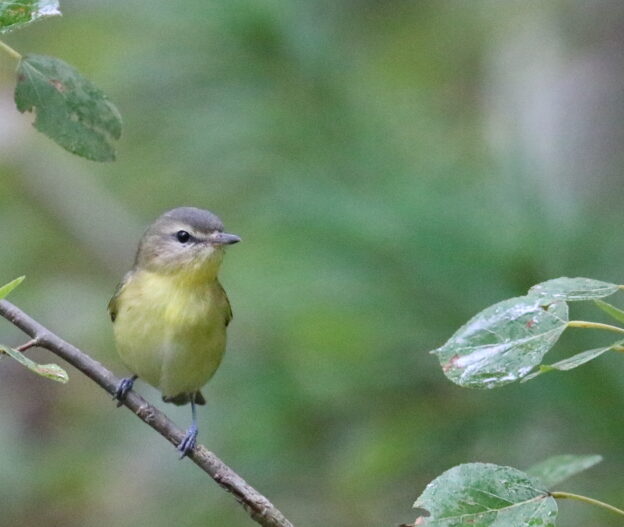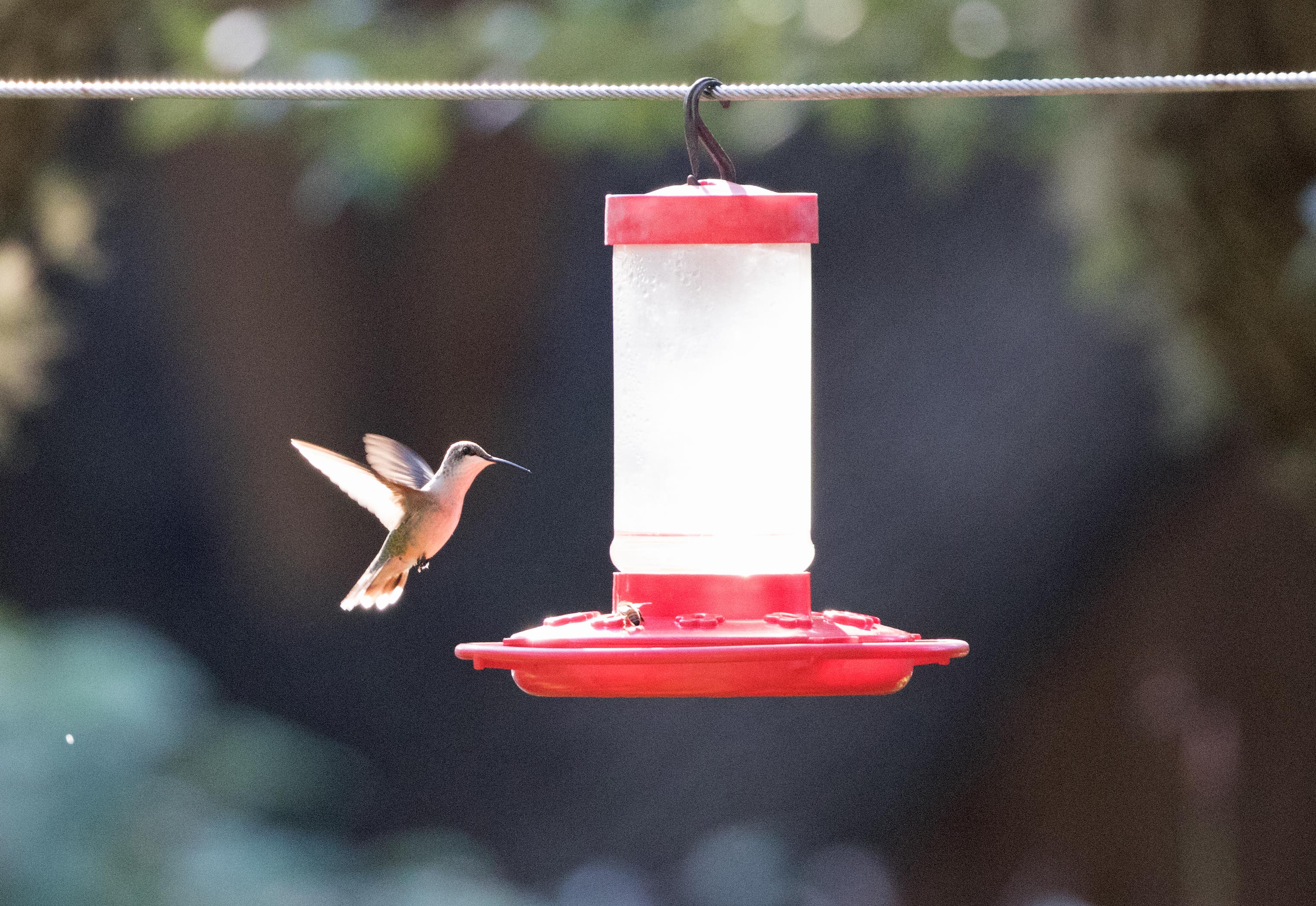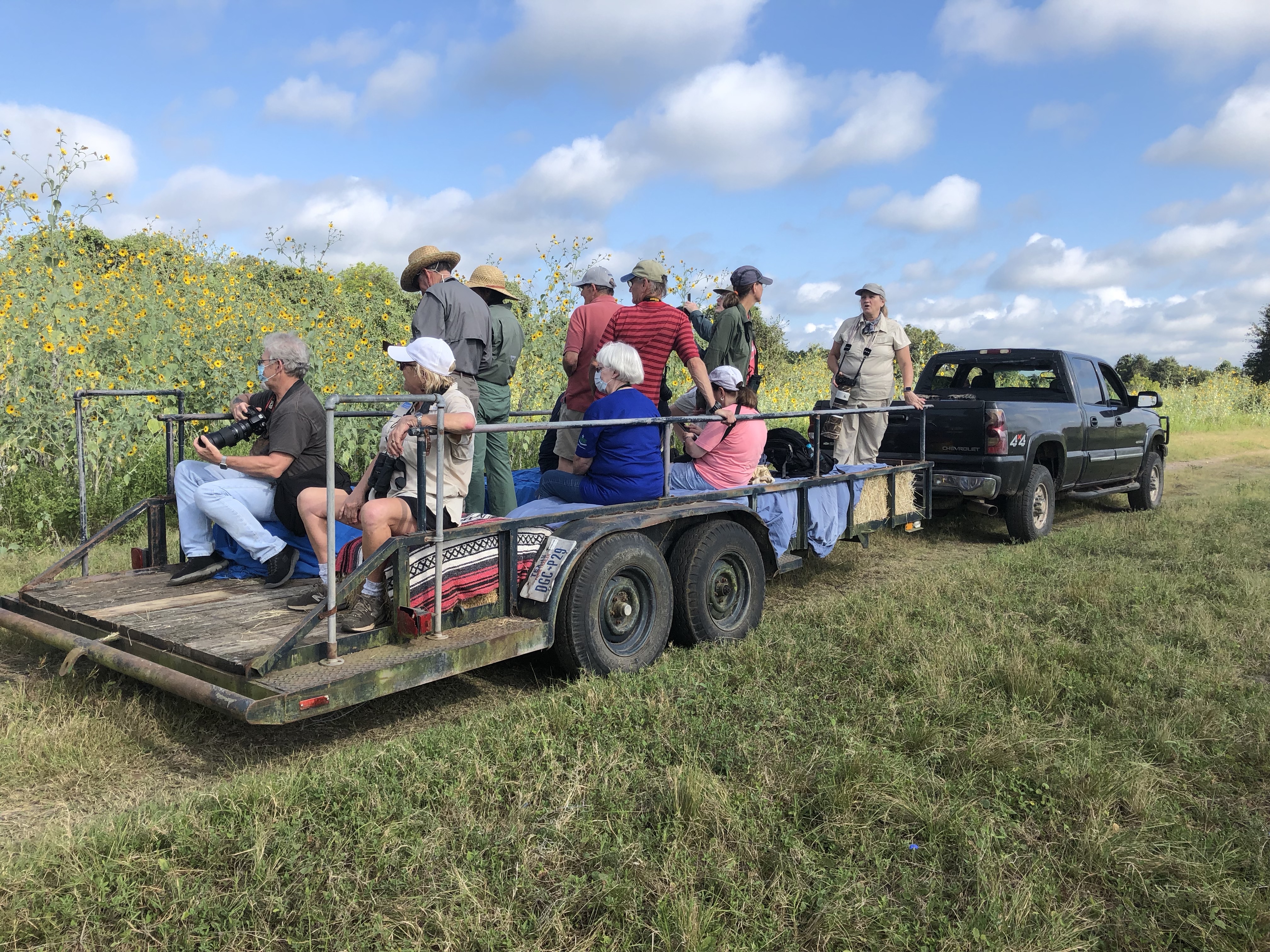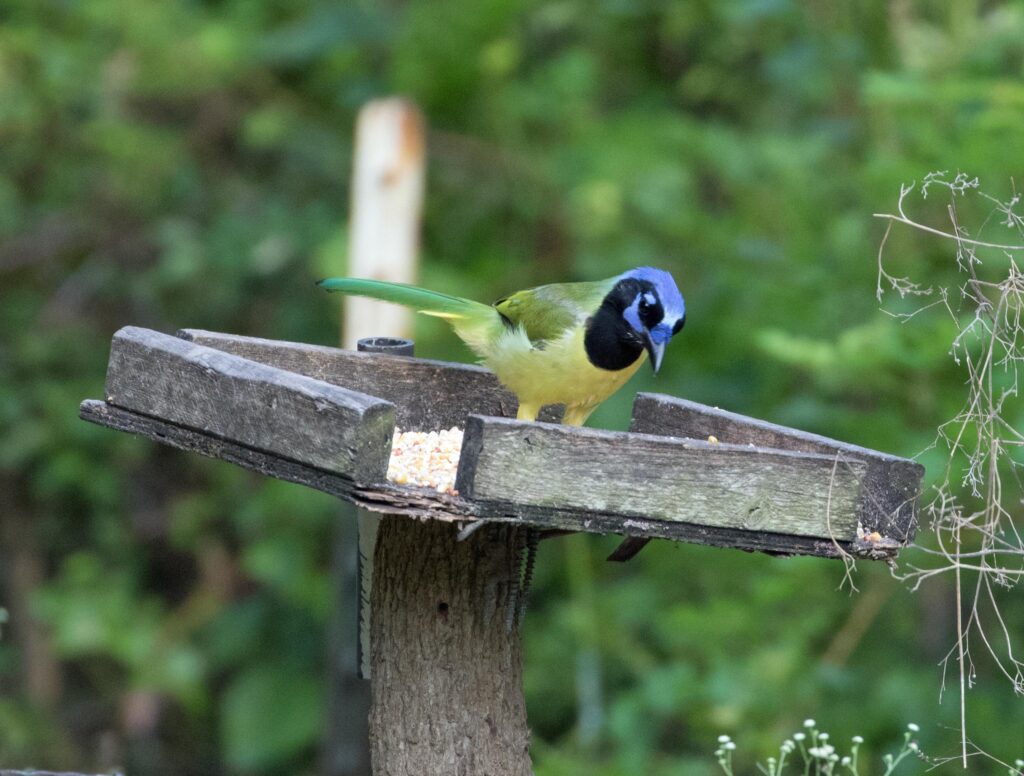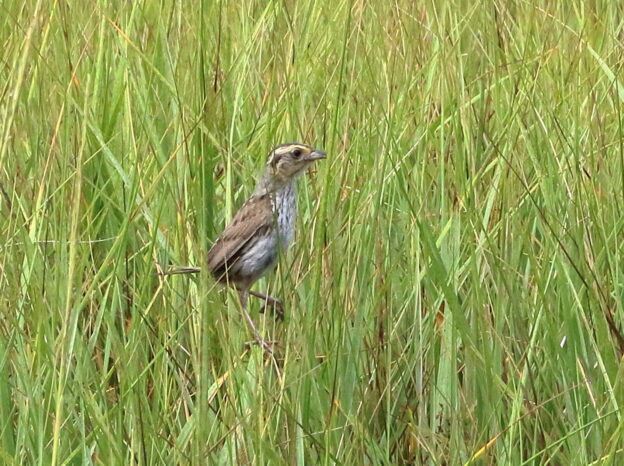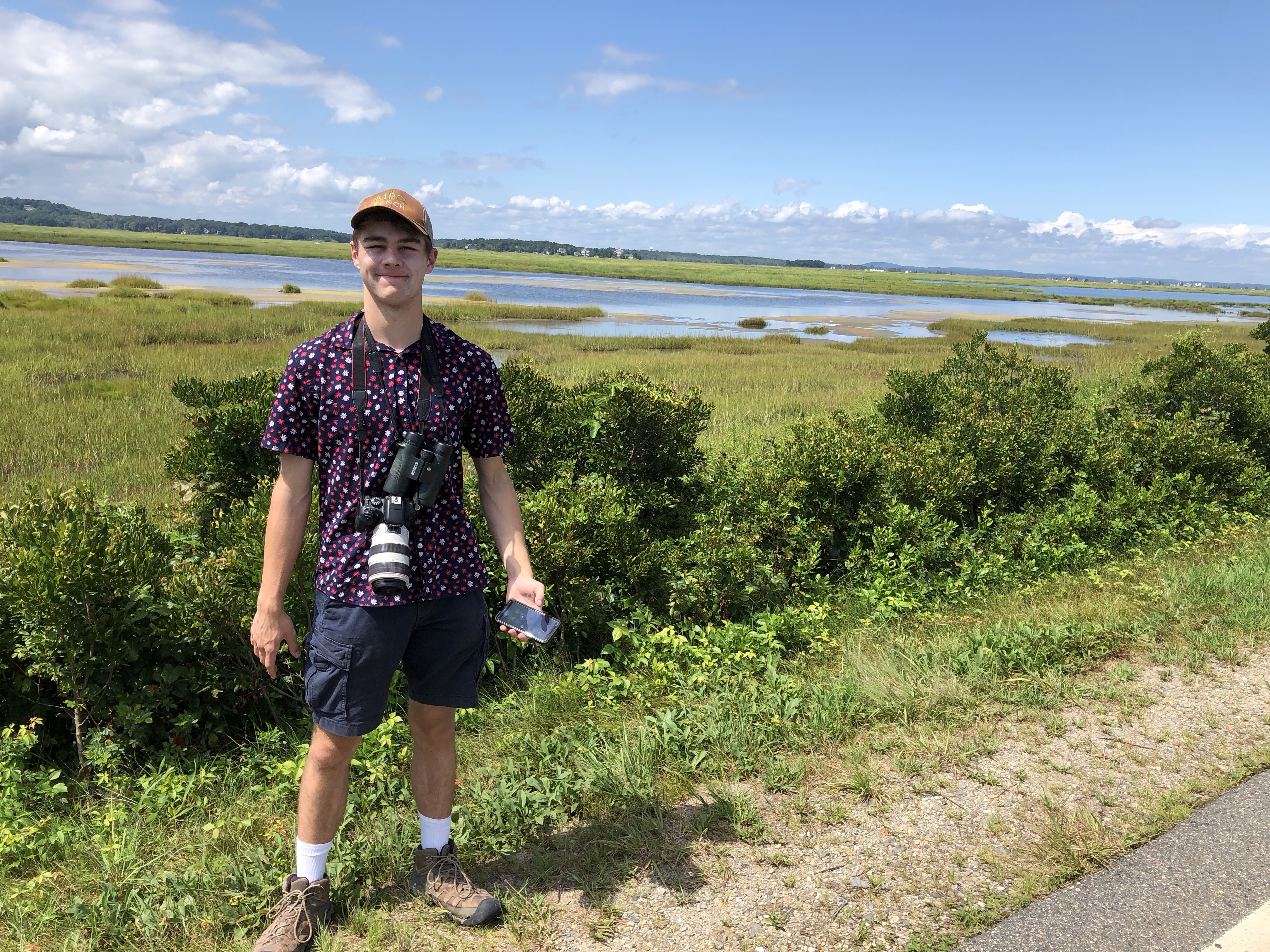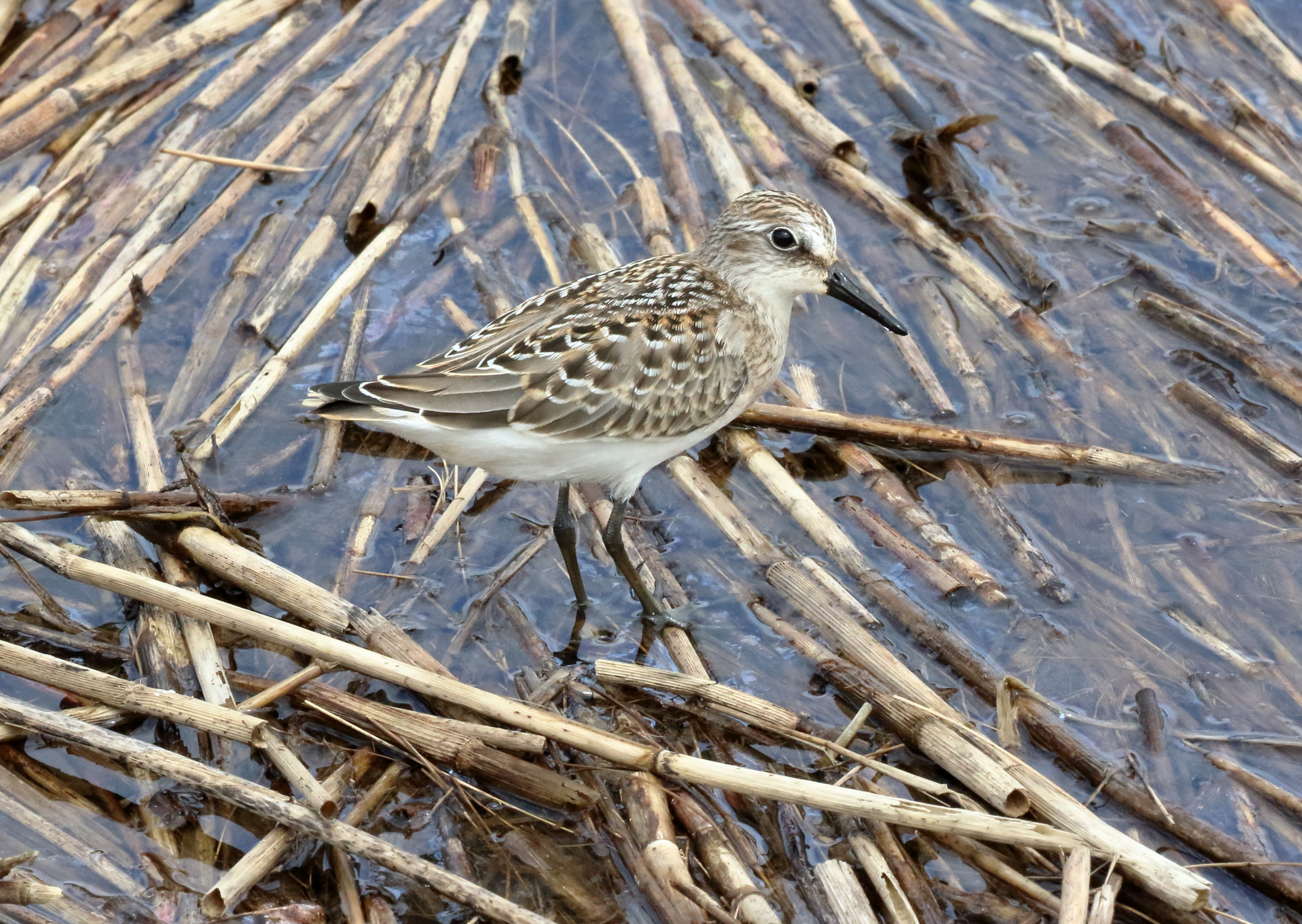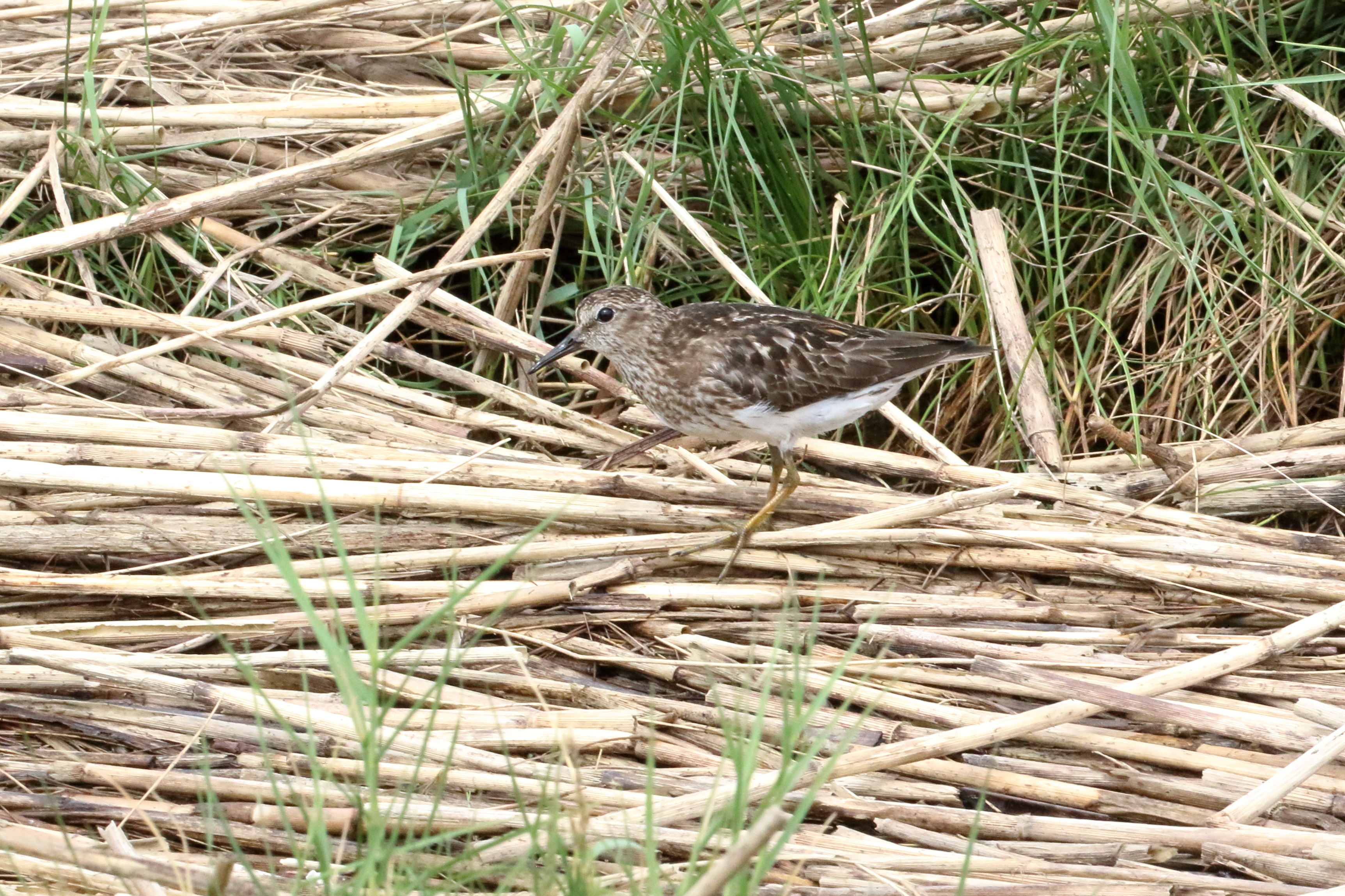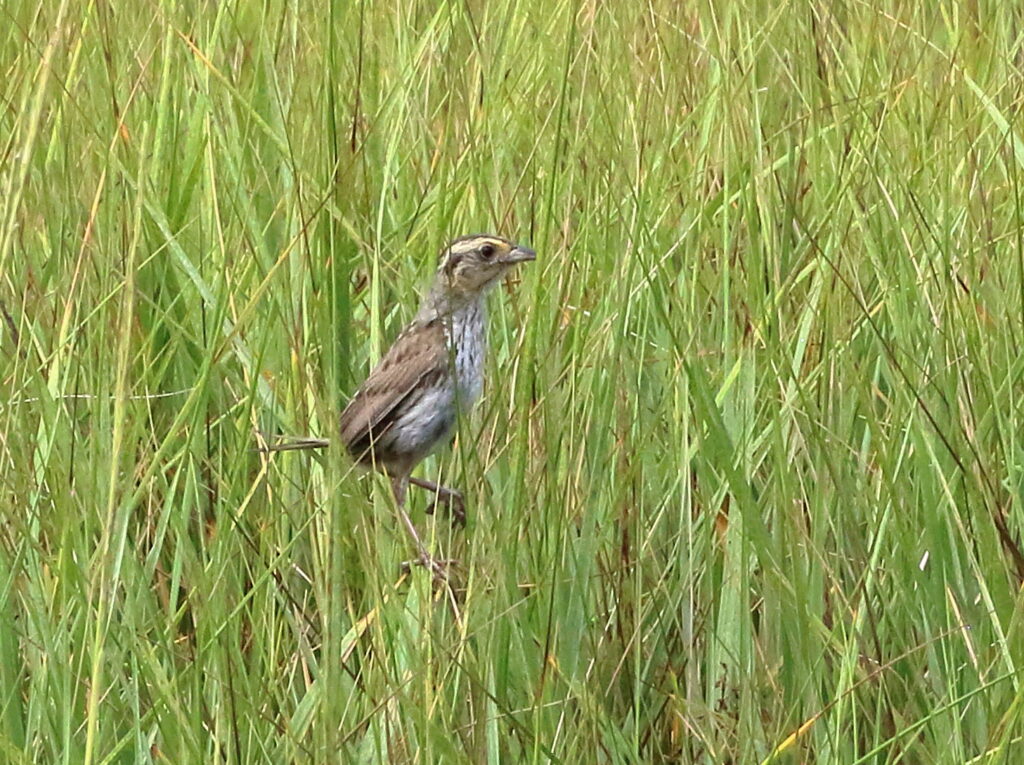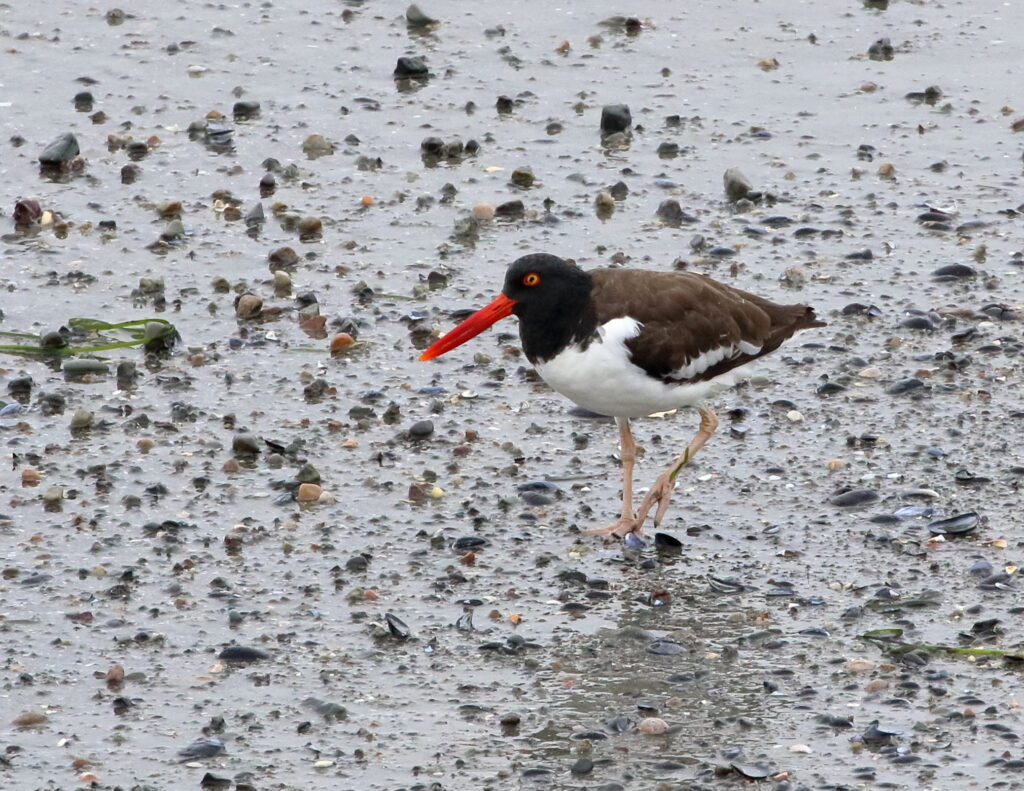My dad and I were hungry. Not for food; we’d already eaten at a fabulous breakfast place in Bar Harbor following the cancellation of our whale-watching trip (which we weren’t all that disappointed by). No, my dad and I wanted warblers.
Earlier that week we’d gotten a taste of the eastern warblers we’d heard so much about, nabbing Common Yellowthroat, Yellow, and a nice Black-and-White Warbler in Massachusetts. The day before today we’d gone to Taylor Bait Farm, a well-known hotspot in Orono, Maine, where the University of Maine (my new home for the next few years) was located. The farm was fairly productive, nabbing us a few cool county birds like Solitary Sandpiper and some Great Egrets. The best part about Taylor Bait Farm, however, was the warblers—specifically, a bright, nonbreeding male Chestnut-sided Warbler that posed for us below eye level for thirty seconds before diving back into the bushes! It was a first lifer warbler in several years, and probably the best-looking one in terms of nonbreeding plumage. During our whole outing at Taylor Bait Farm, we saw a few more Chestnut-sided Warblers and Northern Parulas, and got a really poor look at a Palm Warbler, another lifer, in a tree above us.

But it wasn’t enough. Furthermore, we had ended up at Acadia National Park, which was known for its beautiful views and seabirds, not its warblers. My dad and I started driving around the main park loop, stopping at parking lots to try to pick up some of the eastern seabirds that we needed. After a few stops with nothing but eiders and Great Black-backed Gulls, we finally got our dose of Atlantic birds with a few Black Guillemots floating offshore and a distant Northern Gannet flying through the sea fog, both lifers for my dad. Unfortunately, it looked like that very fog was going to limit our chances of seeing things like shearwaters and storm-petrels from shore.
At the third parking lot, as we piled out to scope the beach, I happened to look up at a tree just beginning to turn yellow and I spotted a small yellow bird foraging in it. I brought my binoculars to my eyes and yelled, “Daddy! There’s a Blackburnian Warbler above you!” As he looked up, I started to see that the Blackburnian Warbler, a species we hadn’t seen since 2016, was not the only bird above us. There were passerines flying between and feeding in trees all around us.
We started calling out names as we followed the mixed flock.
“Red-eyed Vireo! Black-and-White Warbler! American Redstart!”
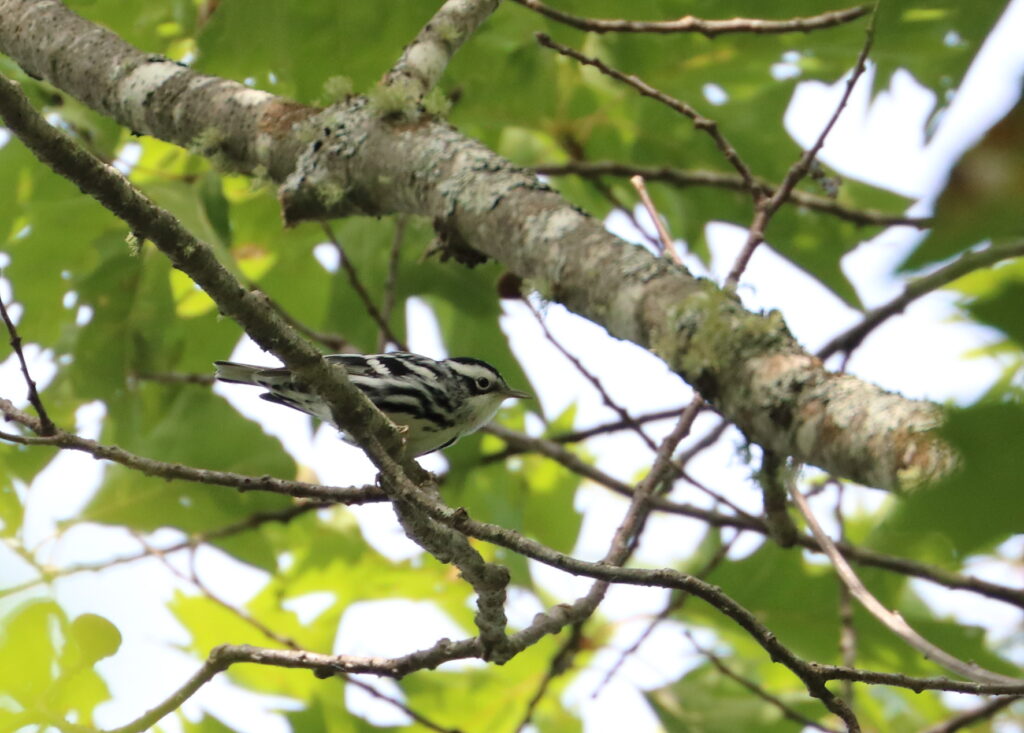
As the flock moved into a group of conifers I glimpsed one of our target species for the trip feeding on the left side of a spruce. “Magnolia Warbler, get your eyes on it!”
We left the parking lot (and the people wondering what we were gawking at) and walked into the woods, continuing to see if we could pull more warblers out of the already insane mixed flock. I spotted several “Baypoll” warblers at one point, a group that includes Blackpoll and Bay-breasted Warblers that look notoriously similar in fall. Finally, I watched one long enough to see a hint of a bay-colored side, identifying it as a Bay-breasted. The mixed flock, in total, had 14 species including 8 species of warblers—more than we’d ever seen in any flock in Montana!
https://ebird.org/checklist/S93635091
Unfortunately my dad had to fly home a few days later, but the warblers weren’t done with me yet. September, the best birding month in much of the east, had just begun, and the University of Maine campus happened to be located next to some perfect habitat for warblers during fall migration. I began birding a trail near my dorm, called the Cornfield Loop, several times a week to search for my other eastern target species: Canada Warbler, Cape May Warbler and Philadelphia Vireo.
The hits came fast. After about a week of scoping the area out, I started seeing large mixed flocks of migrating warblers coming through and in one spot had both of my first two targets within a few trees of one another! My reaction for both of them was the same: I can’t believe this bird actually exists! Warblers became the norm, and I got used to listening for chickadees in order to tell me if there might be something else nearby. Red-eyed and Blue-headed Vireos, Northern Parulas, American Redstarts and Common Yellowthroats popped out of every piece of plant life available, and one marsh yielded huge flocks of sparrows every time I walked through it. Seeing familiar warblers was also a treat: I found both Nashville and Wilson’s during my walks, the latter of which isn’t the easiest to find in the east. Here is one of my lists:
https://ebird.org/checklist/S94686023
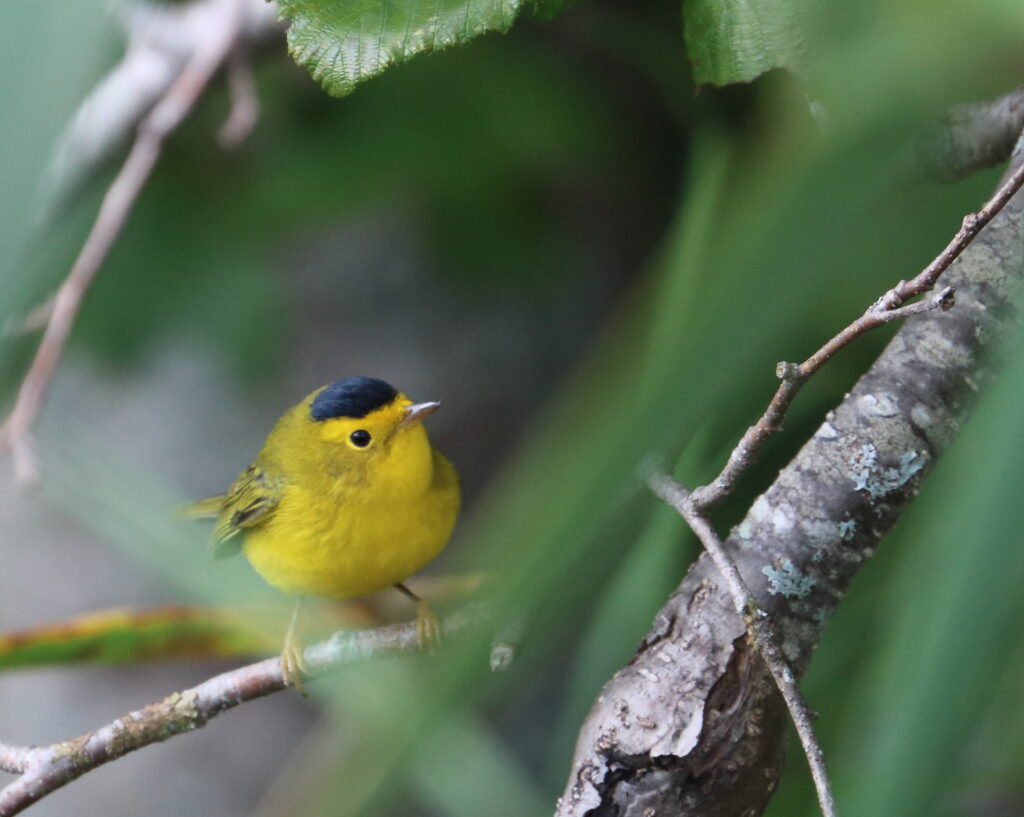
It wasn’t just the Cornfield Loop that had warblers; campus was covered in them. Several mornings I left my dorm for breakfast to be greeted by Black-throated Green Warblers foraging in my face. One night as I walked back from a movie with friends, I began to wonder what all of the high-pitched chips I was hearing were. Could they be sleeping chickadees? No, that doesn’t sound right…and then it hit me. The east was known for its nocturnal migration, and the University of Maine sat right in the middle of the Atlantic Flyway. This meant that the chips I was hearing were the nocturnal flight calls of hundreds, maybe thousands of birds passing over in the dark on their way south to Texas, Florida and beyond! I stared up at the stars, hoping to catch a glimpse of a silhouette as one of these migrating champions flew over.
I got my Philadelphia Vireo by mid-September, pointed out to me by a non-birder friend.
“Hey,” he asked, “What kind of warbler’s that?”
Before I even had my binoculars up I could see the yellow breast, dark eyeline and cute demeanor of a species I’d been dreaming about finding in Montana ever since my friend Nick first alerted me to it. “Philadelphia Vireo, nice find!”
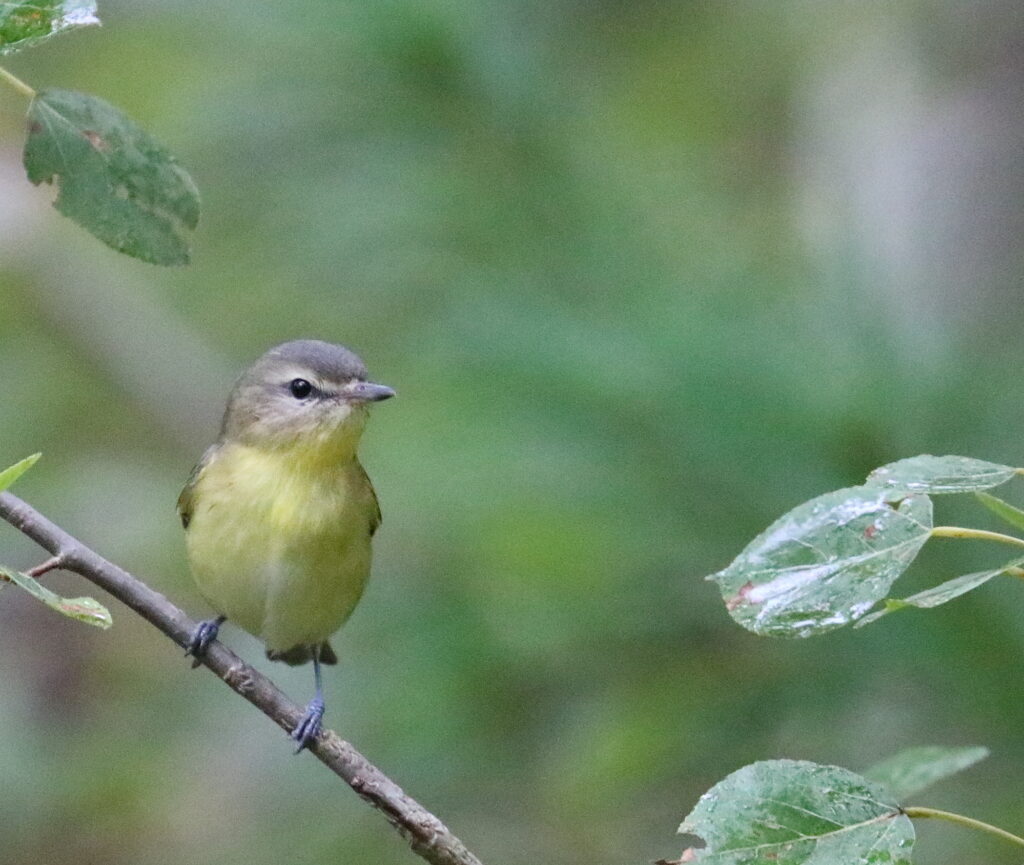
On one walk about a week ago, I was running through the options in my head as to what warblers I still needed for Maine. I had not yet found a Tennessee or Blackpoll Warbler, which was kind of funny considering those were two species my dad and I have found the last few springs in eastern Montana. I was also somehow missing Black-throated Blue, a supposedly common bird that I still needed for my life list.
Suddenly, I spotted a skulky, heavyset passerine fly into a bush near me, making heavy calls. It was acting a lot like a Common Yellowthroat, by far the most common warbler on campus, but I continued to watch it just in case it was one of the rarer species. Sure enough, it briefly popped into view before flying over the trail and out of sight. It flashed me a very dark chest spot contrasting with a complete gray hood as it flew, what I would have called a MacGillivray’s out west. That meant that I’d just scored a Mourning Warbler—MacGillivray’s eastern counterpart and a supposedly much more difficult bird to find. No way!! While Mourning had been on my radar, I hadn’t expected to get it or any of the rarer warblers given that I’d just gotten to Maine less than a month before and was still very content with the common birds.
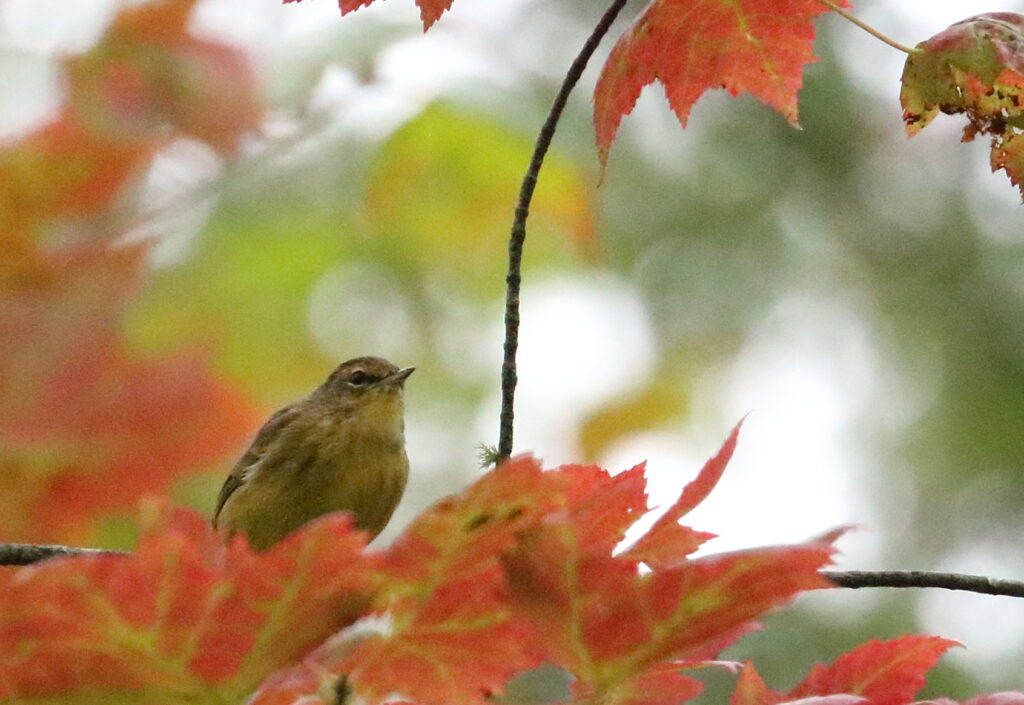
This past week I’ve gotten both Blackpoll and Tennessee Warbler on the Cornfield Loop, bringing the total number of warbler species of seen in Maine to 20, all of which I’d seen in a month compared to the sixteen species of warblers I’d seen in Montana across seven years of birding. I still don’t have Black-throated Blue (though it is definitely still possible), but unfortunately warbler migration is beginning to die down here. Just yesterday eBird marked my report of American Redstart as rare, meaning that a few species are beginning to leave for good. The warblers are now moving through much of the southern United States, including Texas, which you may get to hear about soon from my dad!

